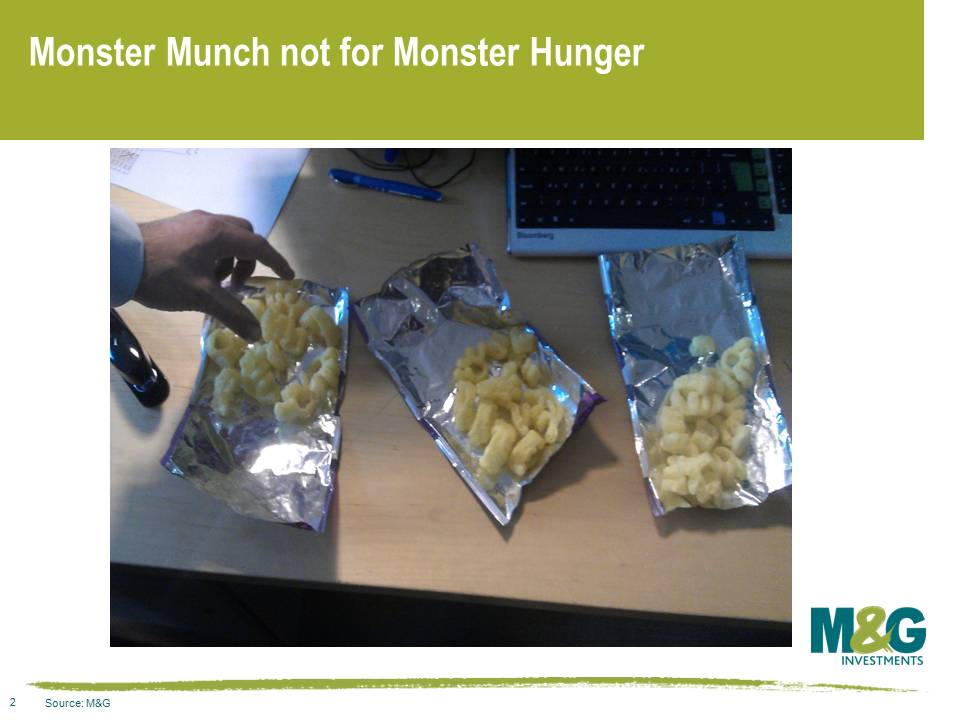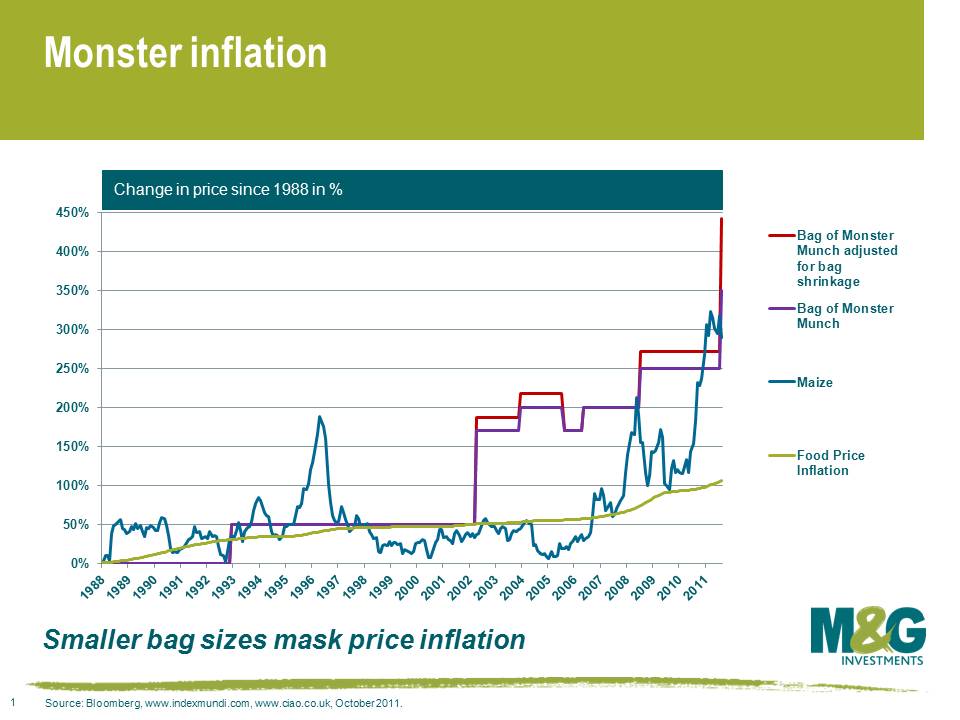Pickled Onion Monster Munch – without looking, how many monster feet do you get in a packet?
Earlier this month the Nobel Prize for Economics went to Sargent and Sims for their work on cause and effect in macro economic policy. All good stuff of course, but it pains us that nobody is looking at the more micro-economic problems of the modern economy – in particular, WHAT KIND OF WORLD IS IT WHERE YOU ONLY GET EIGHT MONSTER MUNCH IN A PACKET?
We have discussed food price inflation in previous blogs and seen how UK supermarkets were able to raise prices and outperform their European peers who had cut prices in periods where commodity prices fell. So when Stefan Isaacs casually commented that Monster Munch appeared to have shrunk in size from when he was a kid, it was time for the kind of quantitative research that modern economists appear so reluctant to perform. Off to the M&G tuck shop we went…
10 monster feet, 10 monster feet, 8 monster feet. Plus some toes. We ran our model and calculated this was an average of 9.33 whole monster feet per packet. It made us wonder – have Monster Munch shrunk? Unfortunately, due to a change in ownership, Monster Munch’s holding company couldn’t provide me with any statistical information. However due to the popularity of this snack to many an 80’s child there is an on-line cult following with numerous people blogging about their experience of the product. So with a little searching it was found that a Monster Munch retailed for around 5-10 pence in 1977 when Monster Munch was launched as “The Biggest Snack Pennies Can Buy”, weighing in at 26g. The bag purchased in our canteen a couple of days ago was 45 pence for a smaller bag of 22g.
How does this compare with both food price inflation, and with the price of maize (the biggest ingredient)? Although the price of Monster Munch is soaring above normal food price inflation the price increases are broadly in line with the price of maize. We’ve plotted two lines though – one just based on the price of a standard size packet of Monster Munch, and one reflecting both that price and the inflation hidden by the shrinkage of the packet. You can see that the “hidden” inflation resulting from a 15% reduction in the packet size. This makes an additional large difference to Monster Munch inflation.
This shrinking of food packaging is something very well known to the Japanese, where despite deflation in the headline numbers for years, the price of instant noodles remained the same – but the size of the plastic tub has been falling year after year. And nearer to home, doing a bit of googling, we found articles referring to a 12.5% fall in the size of Häagen-Dazs ice cream tubs, and a 9% reduction in Scott toilet rolls.
So to address the complaints of our team member, yes you are both getting less snack for your money and it is costing you more.
The value of investments will fluctuate, which will cause prices to fall as well as rise and you may not get back the original amount you invested. Past performance is not a guide to future performance.


18 years of comment
Discover historical blogs from our extensive archive with our Blast from the past feature. View the most popular blogs posted this month - 5, 10 or 15 years ago!


Bond Vigilantes
Get Bond Vigilantes updates straight to your inbox







